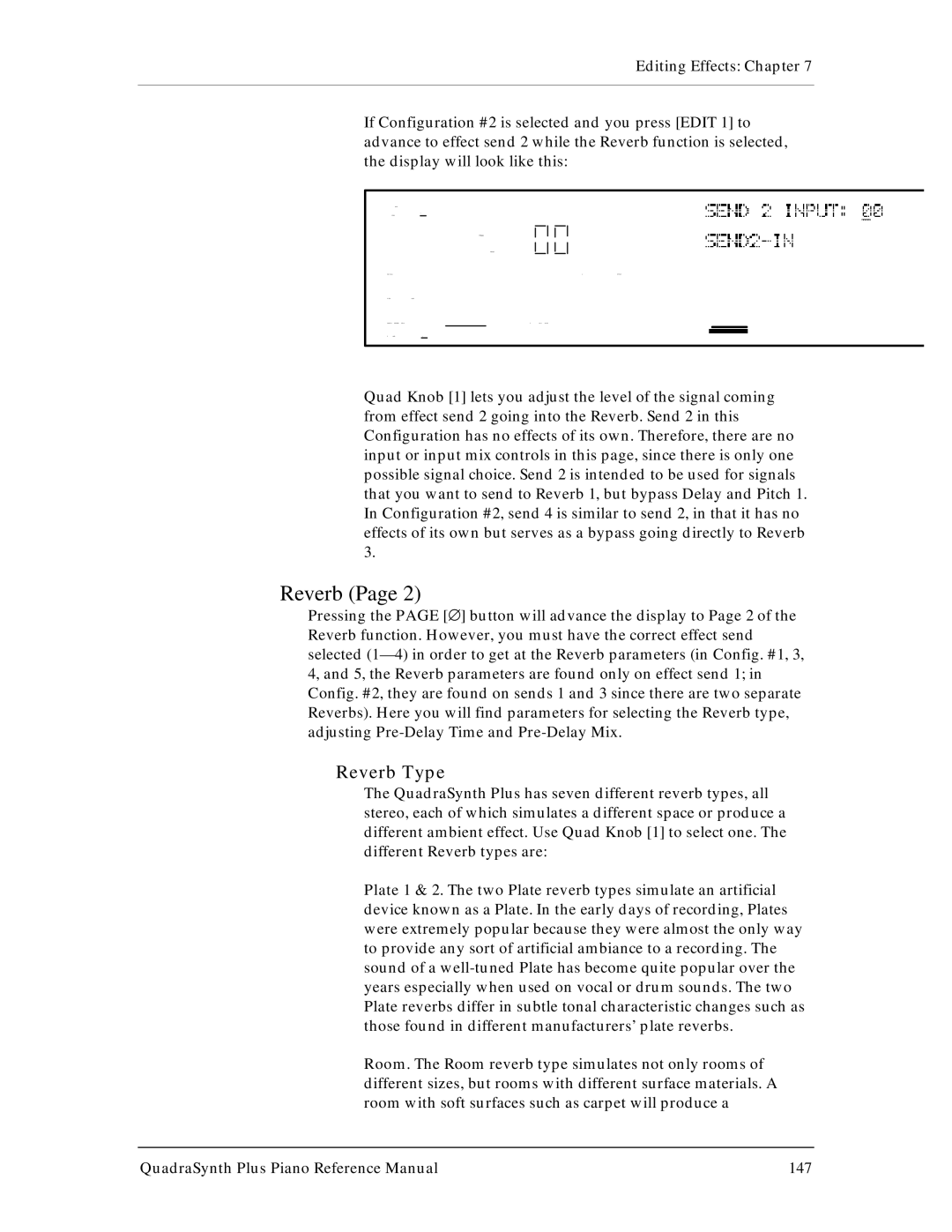
Editing Effects: Chapter 7
If Configuration #2 is selected and you press [EDIT 1] to advance to effect send 2 while the Reverb function is selected, the display will look like this:
Quad Knob [1] lets you adjust the level of the signal coming from effect send 2 going into the Reverb. Send 2 in this Configuration has no effects of its own. Therefore, there are no input or input mix controls in this page, since there is only one possible signal choice. Send 2 is intended to be used for signals that you want to send to Reverb 1, but bypass Delay and Pitch 1. In Configuration #2, send 4 is similar to send 2, in that it has no effects of its own but serves as a bypass going directly to Reverb 3.
Reverb (Page 2)
Pressing the PAGE [∅] button will advance the display to Page 2 of the Reverb function. However, you must have the correct effect send selected
Reverb Type
The QuadraSynth Plus has seven different reverb types, all stereo, each of which simulates a different space or produce a different ambient effect. Use Quad Knob [1] to select one. The different Reverb types are:
Plate 1 & 2. The two Plate reverb types simulate an artificial device known as a Plate. In the early days of recording, Plates were extremely popular because they were almost the only way to provide any sort of artificial ambiance to a recording. The sound of a
Room. The Room reverb type simulates not only rooms of different sizes, but rooms with different surface materials. A room with soft surfaces such as carpet will produce a
QuadraSynth Plus Piano Reference Manual | 147 |
